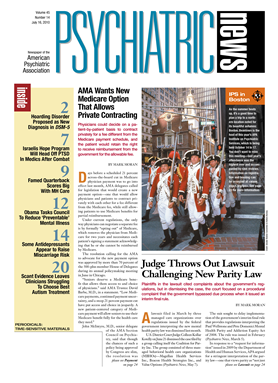Widespread adoption of preventive care measures and health information technology could provide $3.6 trillion in savings over the next 10 years if legislators and regulators can overcome significant implementation cost and inertia challenges, according to a new analysis. The savings identified by an economic research and consulting firm could keep overall health care costs flat over that period.
An analysis of the nation's leading public- and private-sector efforts to save money in the health care system identified several “proven strategies” that could cut costs and improve patient care if implemented widely. The white paper issued June 14 by Thomson Reuters concluded that existing measures aimed at cutting waste, increasing patients' involvement in their own care, better coordinating care among clinicians, and improving patient safety could provide hundreds of billions of dollars in annual savings.
Systematically incorporating “best practices” into the organizational structure of the health care industry, the analysis reports, could cut “waste” by 5 percent each year. The researchers generally considered as waste any spending that didn't go toward improving patient health, such as fraud. Over 10 years, such waste reduction, combined with prevention and technology efforts, could add up to $3.6 trillion and keep total health care expenditures at their current rate of about 17 percent of U.S. gross domestic product.
The researchers noted that they “investigated initiatives that have successfully reduced health care costs without sacrificing quality—what they described as ‘real-world examples of what's possible’—and then estimated the savings if they were widely replicated.”
“The result, detailed in this paper, is one path for reaching this goal over the next decade,” said Ray Fabius, M.D., chief medical officer at Thomson Reuters and coauthor of the paper, in a written statement.
The researchers concluded that expanded clinician access to patients' medical records through electronic record systems will help reduce the duplication of tests and inappropriate treatments that are estimated to cost up to $50 billion annually. Such information availability is a major goal of the 2009 American Recovery and Reinvestment Act (ARRA, PL 111-5), which included $17 billion in grants to encourage clinicians to use electronic medical records—a central component of health technology systems (see
HIT Leaders Tout Multiple Benefits, Improved Privacy Protections).
Another cost savings strategy cited in the report is the expansion of disease-prevention efforts. The federal health care reform law includes several pilot programs to encourage patients to manage their own health through attention to personal behavior, disease prevention, early detection of illness, and appropriate care for chronic diseases.
The authors also concluded that up to $100 billion in annual savings could come through preventing medical errors. They called for adoption of a simple checklist approach stemming from data on evidence-based best practices, which some health care systems have already implemented to improve patient outcomes and reduce costs.
The increasing federal efforts to battle fraud throughout the health care system, including efforts targeting the estimated $60 billion in annual Medicare fraud, also should be bolstered, according to the researchers. Increased fraud-fighting efforts could provide some of the greatest savings in overall health care spending, since fraud accounted for up to 10 percent of the $2.3 trillion in total health care spending in 2007, according to a report published by the George Washington University School of Public Health and Health Services.
The Thomson Reuters researchers advocated widespread use of computerized systems that track data anomalies to identify fraud and breaches in payment integrity. Such systems are already in use in several state Medicaid programs.
